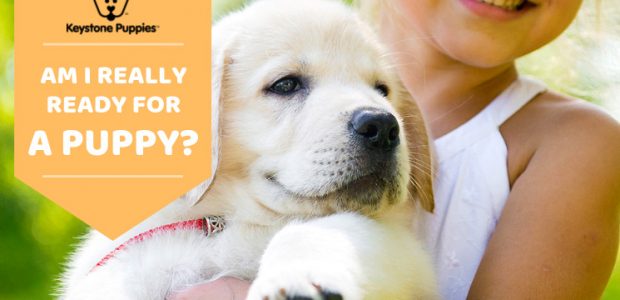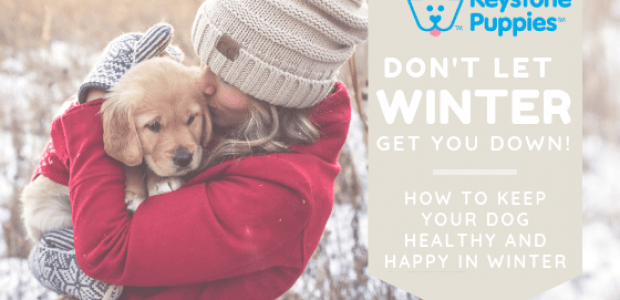How Should You Feed Your Large Breed Pup?
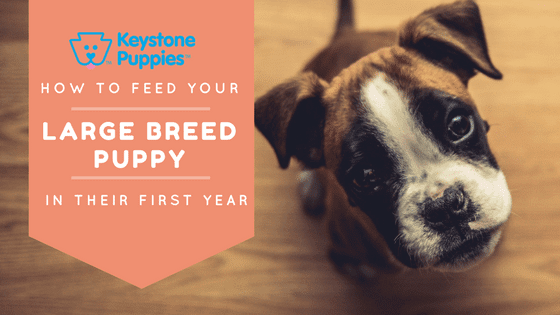
NOTE: Pet Need Home Puppies strongly recommends talking to your vet before committing to any food or feeding routine. Find out if there are any nutritional considerations to be made based on breed, age, or existing health problems.
We categorize our dogs in thousands of ways – by breed, by ability, by temperament, and more. But when it comes to choosing food, it really breaks down into three categories: small, medium, and large. When it comes to food, the most significant variations in nutritional needs can be assigned by size.
Large breed dogs are categorized by weight. If your dog’s ideal adult weight is 50 pounds or over, you have a large breed dog. Remember that you’re choosing your dog’s food category based on his ideal adult weight for the breed. Large dog foods are developed to meet the nutritional need of a family of breeds, not the precise weight of the individual dog. Some examples of large breed dogs include Bernese Mountain Dogs, the Akbash, the Dalmatian, and the Weinmaraner.
Large Breed Puppies’ Nutrition Must Address Certain Risk Factors
Large breed puppies don’t just eat more than medium or small breed dogs. They grow and develop differently. Food for large breed puppies and dogs is formulated to help minimize health risks that are specific to large breeds. Owners should work with vets to help reduce the risk of certain types of orthopedic disease, obesity, and bloat. Nutrition will be a major factor in avoiding all of these conditions.
Growing Too Quickly is Not Healthy for Large Breed Puppies
If you have a large breed puppy such as a Great Dane, a German Shepherd, a Saint Bernard or a Golden Retriever, you’ll find they grow very quickly in the first 18 months. While your instincts may tell you to give them as much food as they want to feed this growth, large dog breeds are actually at risk for growing too quickly.
When large breed pups develop too rapidly, they increase their risk for developmental orthopedic disease (DOD). DOD includes conditions like hip and elbow dysplasia and osteochondrosis, among others.
During your large breed puppy’s dramatic growth period, it’s especially important to monitor nutrition and calorie intake. To prevent overnutrition, look for diets specially formulated to be lower in fat, lower in calcium, lower in phosphorus and lower in vitamin D.
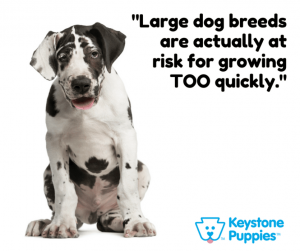
Give Your Pup Smaller Meals, More Often
While it’s tempting to leave food out for large breed puppies to eat throughout the day, stick to three smaller portions. Work with your vet to develop and monitor ideal weight markers for each age, and monitor his weight frequently to make sure he’s on track. Generally, the formula for large dogs is 22 calories per day, per pound. So if you have a 30-pound Rottweiler puppy, you will need to give him 880 calories over the course of the day.
How to Feed Large Breed Puppies in the First Year
0-8 weeks:
Puppies should stay with their mother in the first 8 weeks of life and will get their nutrition from nursing for the first several weeks. 8-week-old puppies will be weaned from their mother and will be able to drink water and eat food.
8-12 weeks:
Start with soft food specially formulated for large breed puppies. Your puppy should be slightly pudgy at this stage. (Puppy fat is a real thing!) Space out feeding to three times a day. Follow the formula of 22 calories per day/per pound. Monitor growth carefully to prevent overgrowth.
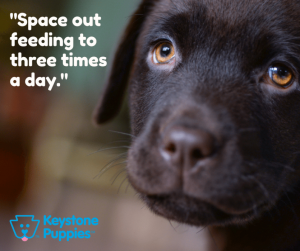
3-14 months:
Because large breed dogs are puppies for a longer period than medium or small breed dogs, you should keep them on puppy food into their 14th month, or even longer if you’d like. At about 3 months, introduce non-moistened food, kibble, or dry food, formulated for large breed puppies. While puppies love soft food, many experts believe the crunchiness of the dry food offers benefits to teeth and digestion. Dry food also requires large breed dogs to do more chewing and crunching, slowing down the eating process. Stick with the 20 calories per pound, per day rule, unless your vet advises otherwise. Your puppy should start slimming down a bit at this stage, losing some of his puppy fat. His legs will get longer and his torso will slim down. If you’re not seeing this transition, consult with your vet.
14-24 months:
Continue to monitor growth and weight carefully. Many large-breed dogs are not fully grown until age 2. Continue to feed your dog three times a day, but switch to an adult-formula food.
After age 2:
Large breeds gain weight easily. For these breeds, extra weight dramatically increases the risk of health issues. Play it safe and limit feedings to twice a day. Measured nutrition divided into two portions should keep your dog well-nourished.
Want to learn more about the best ways to feed your dog? We recommend checking out these articles by PetMD.com and the American Kennel Club.
*****
Pet Need Home Puppies cares about your dog’s health. Because your dog may have special circumstances or considerations not covered in this article, talk to your vet about the best way to feed your puppy before committing to any feeding routine. If you haven’t decided which breed of dog is right for you, research over 200 breeds here. Want to search for your new puppy now? Click here to get started.




